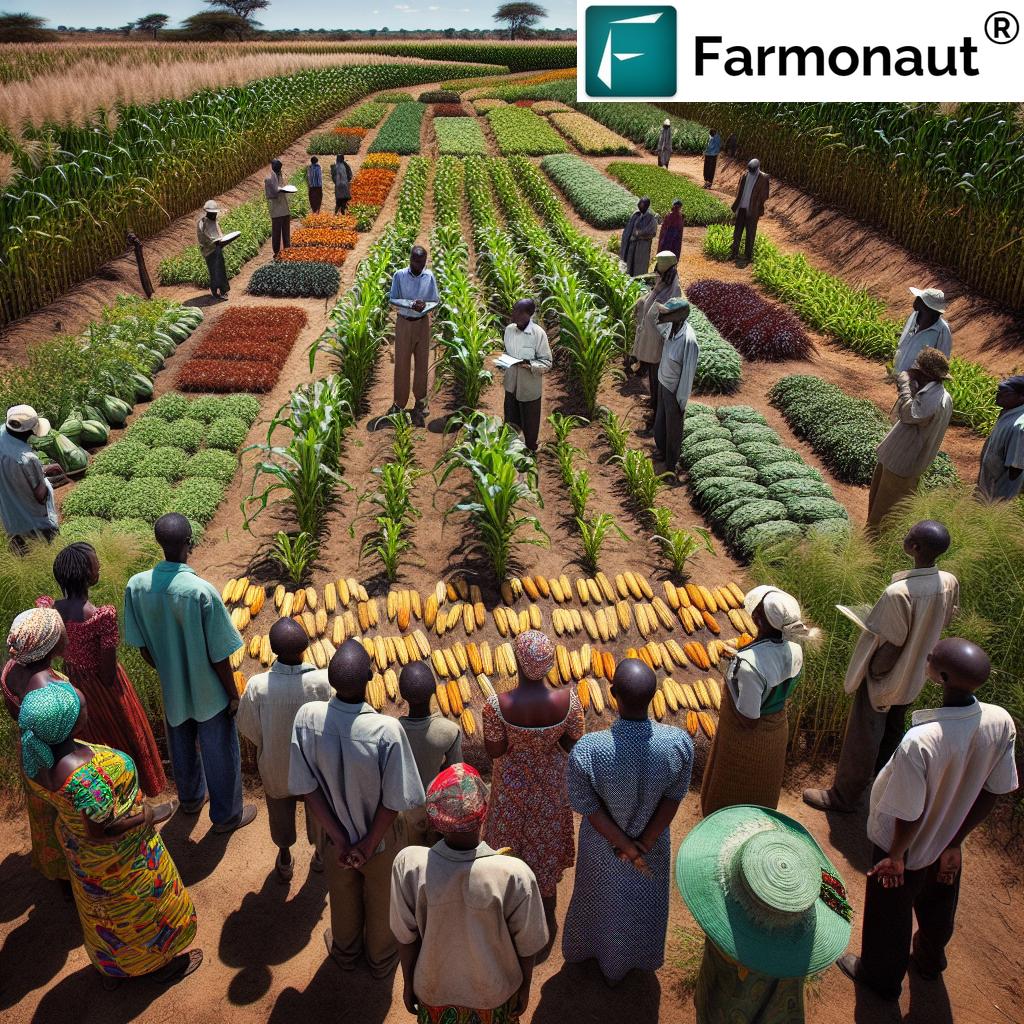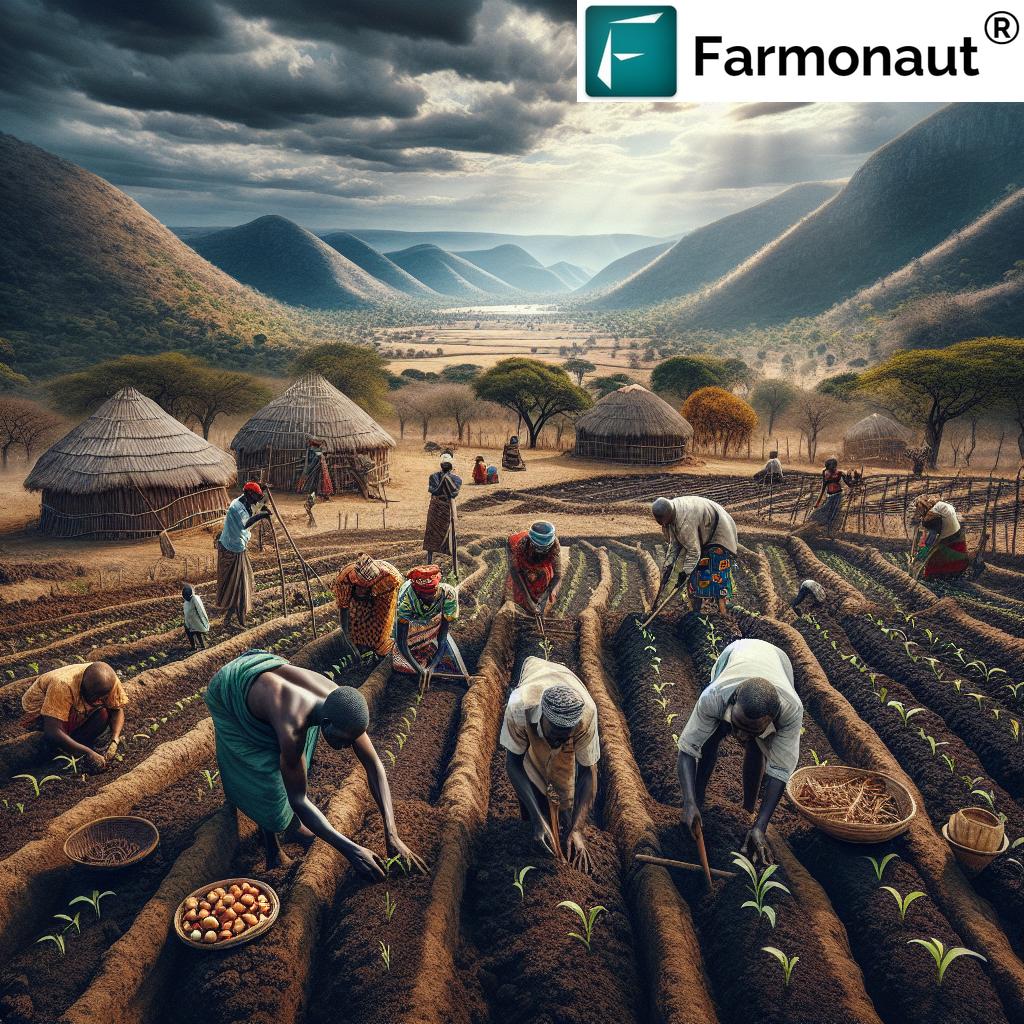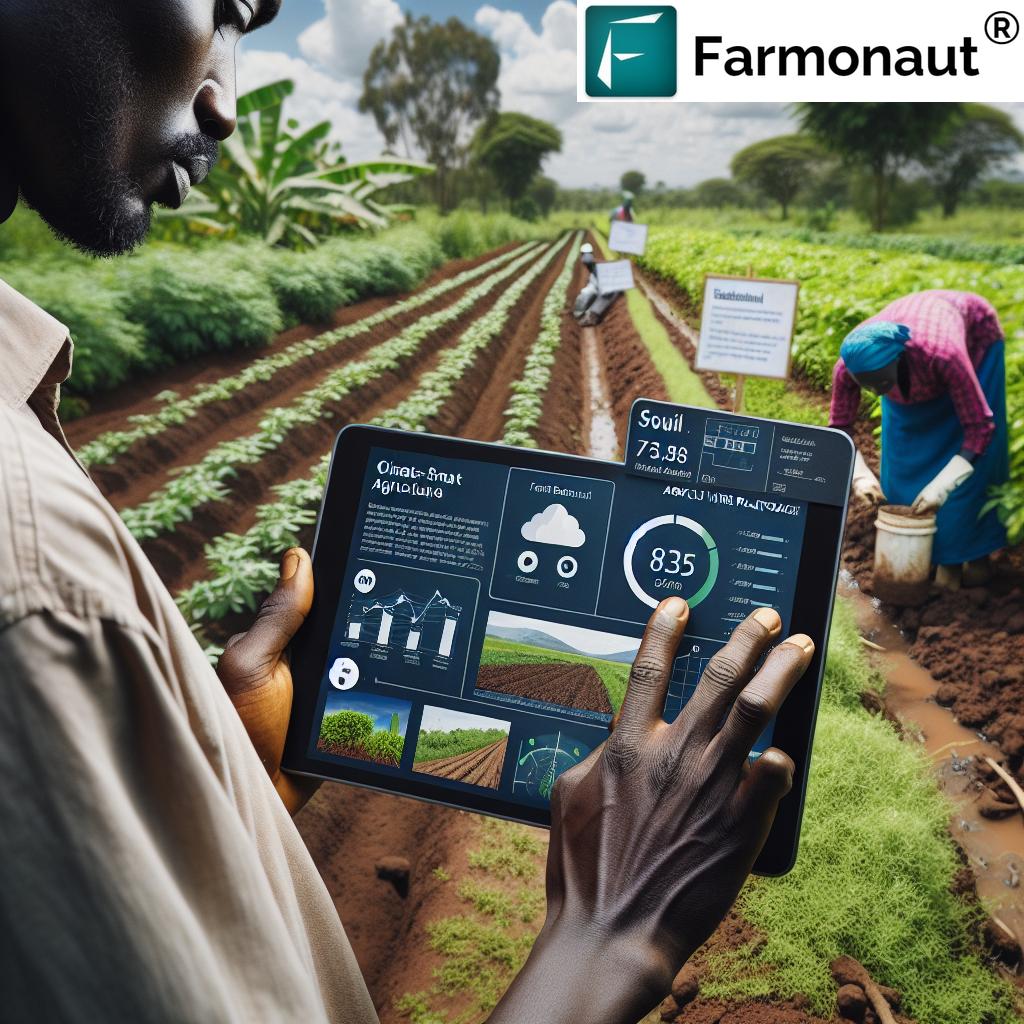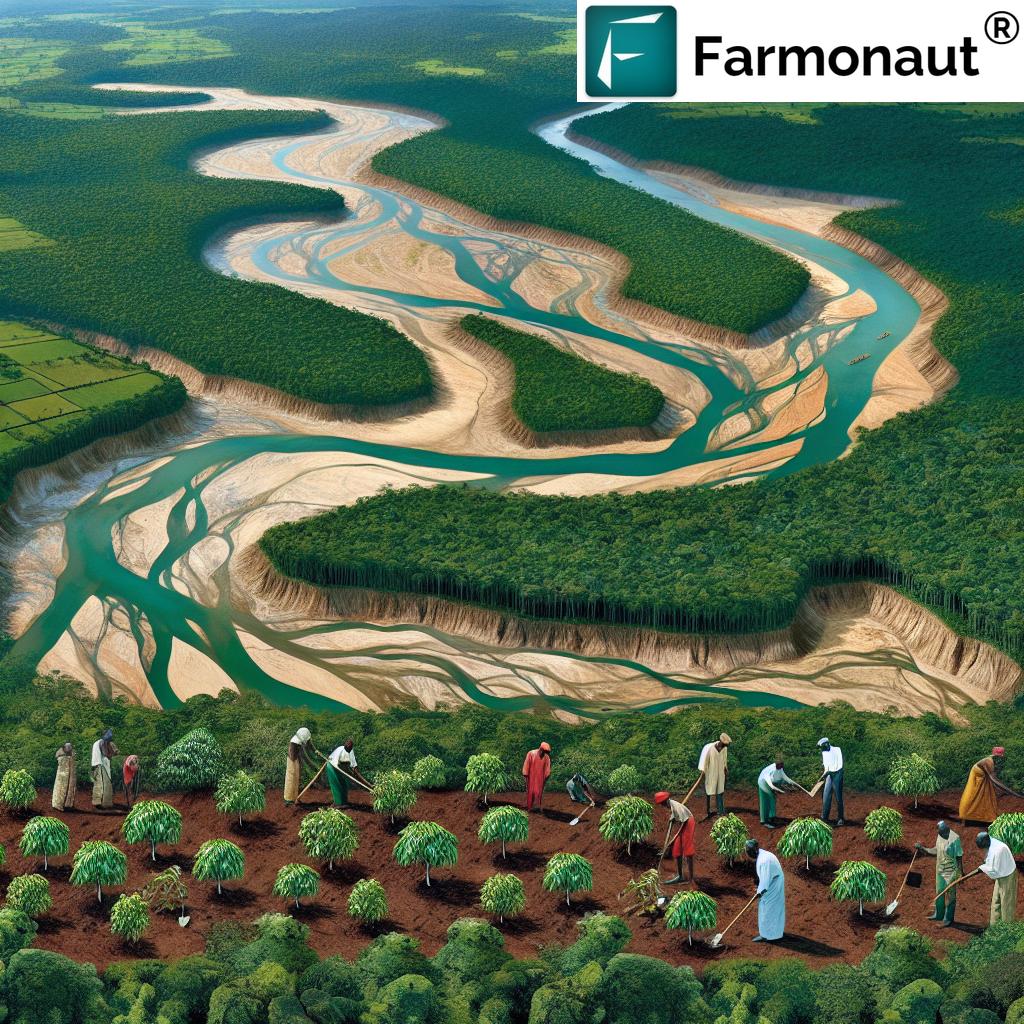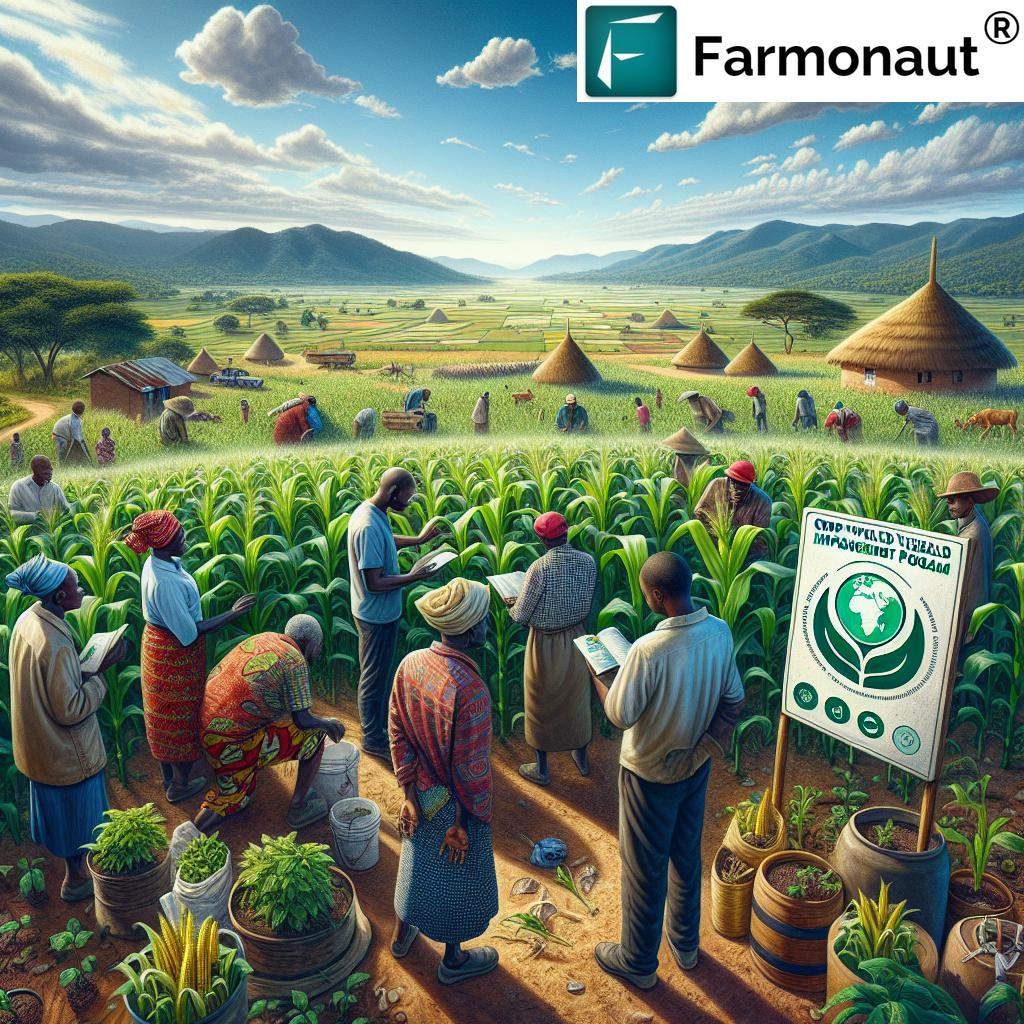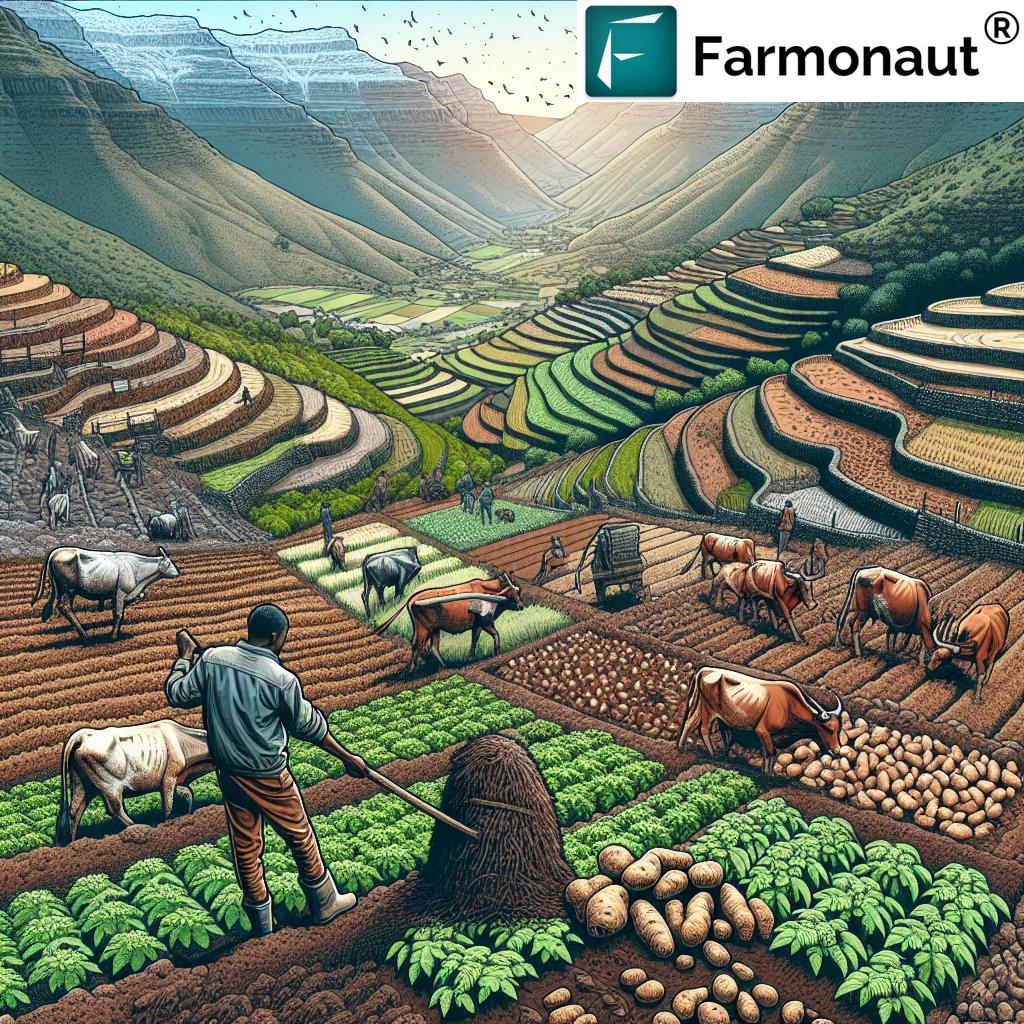7 Effective Conservation Agriculture Methods to Boost Drought Resilience
“Over 70% of Zimbabwean farmers use drought-resistant traditional grains to improve food security during dry seasons.”
- Introduction: Conservation Agriculture in Zimbabwe
- Raising the Stakes: Agriculture Challenges and Droughts in Zimbabwe
- Why Conservation Agriculture?
- 7 Effective Conservation Agriculture Methods to Boost Drought Resilience
- How Farmonaut Empowers Zimbabwean Farmers with Climate-Smart Agriculture
- Comparison Table: Conservation Methods & Drought Resilience
- Sharing and Learning: Peer Knowledge Exchange in Rushinga
- Get Started with Farmonaut
- FAQs on Conservation Agriculture and Drought Resilience
- Conclusion: Building a Resilient Future in Zimbabwean Agriculture
Introduction: Conservation Agriculture in Zimbabwe
Conservation agriculture in Zimbabwe is reshaping the future of food security, environmental sustainability, and rural livelihoods. Our nation’s land—spanning from the vibrant BULAWAYO region to the resilient villages of Rushinga—faces mounting challenges from prolonged droughts, unpredictable rainfall, and the growing impacts of climate change. As farmers, we have traditionally relied on staple crops like maize and cotton. But with the realities of semi-arid conditions and declining maize yields due to El Niño and shifting weather patterns, our community must embrace new, resilient farming methods.
Today, conservation agriculture is about much more than just growing drought-resistant crops. It’s a holistic approach to soil health, water management, minimum land disturbance, and climate-smart practices like using traditional grains Zimbabwe—forging pathways to a sustainable, food-secure future for all Zimbabweans. In this comprehensive guide, we’ll explore the 7 most effective conservation agriculture methods proven to boost drought resilience, drawing on research, real data, and insights from communities like ours who are pioneering change on the ground.
Raising the Stakes: Agriculture Challenges and Droughts in Zimbabwe
We, as smallholder farmers in Zimbabwe, are intimately familiar with the volatility of seasons and the direct relationship between our fields and the environment. Once, abundant rains supported our cash crops of maize and cotton. However, recurrent and prolonged droughts, price factors in the world cotton industry, and economic instability—such as currency volatility—have devastated livelihoods and threatened national food security. The impact of El Niño on agriculture has been profound, often leaving more than half the population vulnerable to hunger.
For instance, in 2024, after months of erratic rainfall, the government of Zimbabwe declared an official drought emergency to mobilize resources for millions facing hunger. Such crises—from northern areas like Rushinga to the wider BULAWAYO region—have highlighted the need for resilient, climate-smart agriculture that responds to these new realities.
But within these challenges, we see opportunity. By drawing on local knowledge and the wisdom of our ancestors—who cultivated sorghum and millet long before maize rose to prominence—we can restore balance to our land and support our communities through droughts and climatic uncertainty, using conservation agriculture methods tested through both tradition and modern research.
Why Conservation Agriculture? Adapting Our Farming Practices for Resilience
What defines conservation agriculture in Zimbabwe? At its core, it’s a set of adaptable farming practices and technologies focused on:
- Minimum Soil Disturbance: Using minimum tillage to reduce erosion and retain moisture.
- Crop Diversification: Rotating crops such as millet, sorghum, and cowpea to enhance soil fertility.
- Organic Matter Retention: Applying mulches or maintaining plant residue to boost water retention and prevent soil degradation.
- Climate-Smart Technology: Leveraging precision agriculture platforms (like Farmonaut) for real-time data and monitoring field conditions.
These practices have been validated scientifically. For instance, conservation agriculture has consistently outperformed conventional ploughing in Rushinga for over five years—with higher yields and greater drought resilience.
“Conservation agriculture methods can increase crop yields by up to 50% in drought-prone regions like Zimbabwe.”
7 Effective Conservation Agriculture Methods to Boost Drought Resilience
Let’s explore the seven most impactful conservation agriculture methods adopted in Zimbabwe’s semi-arid areas—including Rushinga, Bulawayo, and similar regions.
1. Minimum Tillage: Reducing Soil Disturbance for Sustainable Farming in Semi-Arid Regions
Minimum tillage, a foundational principle of conservation agriculture, involves disturbing the soil as little as possible during crop planting and weed management. Rather than turning the earth heavily—as in traditional ploughing—we create precise planting stations or narrow seed slots.
- Benefits: This approach prevents soil structure breakdown, conserves water, reduces runoff, and improves soil organic matter. It also helps in the growth of beneficial soil microbes essential for nutrient cycling.
- Impact on Drought Resilience: By minimizing disturbance, we limit evaporation, preserving moisture during droughts. For farmers in areas like Rushinga, minimum tillage often means the difference between a healthy harvest and crop failure during low-rainfall seasons.
Practical Example: When growing sorghum or millet using the minimum tillage method, we only open small holes or furrows for the seeds, leaving crop residues on the soil surface. This not only shields the topsoil from direct sunlight but also forms a micro-environment where moisture can persist longer.
Moreover, scientific research confirms that yields from minimum tillage plots consistently outperform those on conventionally tilled land in semi-arid Zimbabwe.
2. Mulching: Shielding Soil and Maximizing Water Retention
Mulching is the practice of covering the soil surface with organic materials—such as crop residues, grass, or leaves—after planting. This ancient yet effective farming method is integral to conservation agriculture.
- Key Advantages:
- Reduces soil temperature fluctuation, benefiting growing crops in hot climates.
- Minimizes water evaporation, ensuring available moisture throughout the season.
- Suppresses weeds, decreasing competition for nutrients and water.
- Improves soil organic content and encourages beneficial earthworm activity.
In Zimbabwe, particularly northern villages and Rushinga, mulching is a low-cost solution to drought—especially valuable as we transition from maize to more resilient species like sorghum and millet.
Through this simple practice, we protect our fields, improve yields, and enhance sustainability, all while reducing labor and input costs for the next season.
3. Crop Rotation: Climate-Smart Agriculture for Soil Health and Yield Stability
Crop rotation is a centuries-old method that involves systematically growing different crops on the same plot in sequence, rather than mono-cropping (growing a single crop continuously). Its value in conservation agriculture in Zimbabwe is well-proven.
- Soil Health and Nutrient Balance: Rotating grains like sorghum and millet with legumes (such as cowpea) boosts soil nitrogen through biological fixation.
- Pest and Disease Control: Changing plant families each season disrupts pest and disease cycles, reducing dependence on chemical pesticides.
- Drought Resilience: Drought-tolerant crops in rotation (e.g., legumes before maize) improve soil structure and reserve water deep in the profile—vital during dry years.
According to research data gathered in Rushinga, the “crop rotation benefits for soil health” are directly linked to higher yields, less disease pressure, and long-term soil fertility, especially when adopting traditional grains Zimbabwe.
Example rotation: Sorghum → Cowpea → Millet → Maize (as rainfall allows)
Tip: For easy, data-driven crop rotation planning and adaptive management throughout the season, use the
Farmonaut Crop, Plantation & Forest Advisory features. These tools enable us to plan our rotations, monitor crop health in real time via satellite data, and receive AI-based advisories specific to Zimbabwean conditions, maximizing resilience and yield.
4. Cover Cropping: Building Resilient Soil and Improving Water Infiltration
Cover cropping refers to planting crops such as legumes, vetch, or grass species not for immediate consumption or sale, but to shield the soil during fallow periods.
- Moisture Management: These crops form a “living mulch,” conserving water and preventing topsoil losses due to sun or heavy rains.
- Soil Fertility: Cover crops—especially legumes—return nutrients to the soil and support beneficial microorganisms vital for healthy fields.
- Weed Suppression: Vigorous ground cover helps prevent the growth of weeds, reducing herbicide needs and labor costs.
A common practice in Rushinga is planting cowpea or sunhemp during post-harvest or off-season periods before establishing the main grain crop. This strategy primes the land for the next season, especially under drought-prone conditions.
Through cover cropping, we are stewards of soil, water, and the future productivity of our land.
5. Agroforestry: Integrating Trees and Crops for Sustainable Farming
Agroforestry merges trees and crops within the same fields, harnessing the ecological benefits of both.
- Microclimate Improvement: Tree canopy moderates temperature extremes, protects crops from wind, and reduces crop water stress during droughts.
- Soil Enrichment: Deep-rooted trees capture nutrients inaccessible to shallow-rooted crops, cycling them back to the topsoil through leaf litter.
- Income Diversification: Fruit, nut, or fuelwood trees provide alternative cash streams even in years of crop failure.
Popular agroforestry species in Semi-Arid Zimbabwe include Faidherbia albida (which sheds leaves during the main rainy season, maximizing light for annual crops), marula, or acacia. Integrating these with drought-tolerant grains like sorghum or millet strengthens farm resilience and long-term sustainability.
Globally, monitoring your carbon footprint is essential in agroforestry systems. Farmonaut provides carbon footprint management features so we can track and reduce emissions, enhancing our farms’ climate-smart credentials.
6. Intercropping: Maximizing Land Use and Drought Protection
Intercropping is the simultaneous cultivation of two or more crops in the same field. In Zimbabwe’s smallholder systems, this often means sewing rows of sorghum or maize alongside legumes like cowpea or groundnut.
- Resource Efficiency: Different species utilize nutrients and water from different soil layers, improving total system productivity.
- Risk Diversification: If one crop fails due to drought, pests or disease, the other crop may still yield, stabilizing food and cash income.
- Soil Health: Legumes add nitrogen to the system, benefiting cereals and reducing need for synthetic fertilizers.
Through strategic intercropping—such as alternating rows of millet and cowpea, or maize and beans—we build resilient, diverse systems well-suited to Zimbabwean conditions.
7. Traditional Grain Cultivation: Revitalizing Sorghum and Millet for Resilience
Reviving the cultivation of traditional grains (sorghum, millet) is perhaps the crown jewel in Zimbabwe’s conservation agriculture movement. Prior to colonial influences, these grains were staples across villages for a reason: their inherent drought resistance, ability to thrive on marginal soils, and reduced water needs make them ideal for today’s semi-arid areas.
- Ecosystem Synergy: Deep-rooted varieties hold soil together, prevent desertification, and strengthen water retention beneath fields.
- Food Security: Reliable yields in low-rainfall years protect against hunger, while growing popularity in urban markets boosts income potential.
- Climate Adaptation: These grains mature early and tolerate heat spikes, helping us adapt to the unpredictability of climate change and the impact of El Niño on agriculture.
By integrating sorghum and millet cultivation within conservation agriculture, we not only protect heritage but address modern needs for climate-smart, sustainable farming in semi-arid regions.
Benefit: Adopt Farmonaut’s Blockchain-Based Traceability solutions for your traditional grain crops. This feature assures buyers and markets of your grains’ origin and quality—from field to table—boosting trust, transparency, and potential returns for Zimbabwean farmers.
How Farmonaut Empowers Zimbabwean Farmers with Climate-Smart Agriculture
At Farmonaut, our mission is to make precision agriculture affordable and accessible for every farmer—smallholder or agribusiness—in Zimbabwe and beyond. We believe that smart use of technology and data-driven practices is the fastest way to boost yields, optimize resources, and fight the effects of drought and climate change.
- Satellite-Based Monitoring: Get real-time crop health, soil moisture, and weather insights using the Farmonaut mobile or web app. We can spot early drought symptoms, pest issues, or nutrition gaps—before they threaten our harvest.
- AI Advisory System: Let the Jeevn AI-based platform analyze your field data and local rainfall patterns to optimize crop selection and resource allocation for each season.
- Blockchain Traceability: Add value to your sorghum, millet, and other crops by providing end-to-end traceability—boosting your reputation and market leverage.
- Resource Management: Track and manage fleets & machinery Fleet Management solution, reducing fuel and time costs.
- Finance & Crop Insurance: Use satellite-based verification for easier, faster access to crop loans and insurance, directly tackling one of the biggest factors hindering innovation for smallholder farmers.
Our platform’s real-time data empowers us to shift seamlessly between crops, adapt to El Niño risks, and maximize yields on every hectare—even as the climate grows more unpredictable.
Whether you’re a small-scale farmer in Rushinga or an agribusiness spanning multiple areas, Farmonaut is dedicated to supporting climate-smart, sustainable growth in all Zimbabwean communities.
Comparison Table of Conservation Agriculture Methods and Their Impact on Drought Resilience
| Conservation Method | Key Practices | Estimated Yield Improvement (%) | Drought Resilience Level | Climate-Smart Benefits | Traditional Grain Adoption Rate (%) |
|---|---|---|---|---|---|
| Minimum Tillage | Planting basins, minimal soil disturbance, retain residues | 15–30 | High | Reduces erosion, retains moisture, enhances soil structure | 60–70 |
| Mulching | Cover with plant material, avoid bare soil | 10–25 | Medium–High | Reduces evaporation, suppresses weeds, increases soil fertility | 55–70 |
| Crop Rotation | Alternate cereals & legumes, season-by-season shifts | 20–30 | High | Improves soil health, disrupts pest cycles, optimizes nutrient use | 65–75 |
| Cover Cropping | Grow off-season legumes or grasses | 10–20 | Medium–High | Prevents erosion, boosts fertility, increases infiltration | 50–60 |
| Agroforestry | Integrate trees with crops in fields | 15–25 | High | Microclimate moderation, enhances biodiversity, carbon storage | 55–65 |
| Intercropping | Combine grains and legumes in same field | 20–30 | High | Maximizes resources, reduces risk, supports soil health | 60–75 |
| Traditional Grain Cultivation (Sorghum & Millet) | Grow drought-resistant varieties, early planting | 30–50+ | Very High | Reliable yields under low rainfall, reduces hunger risk | 70–78 |
Sharing and Learning: Peer Knowledge Exchange in Rushinga
One of the most powerful engines for agricultural innovation is peer-to-peer knowledge exchange. Zimbabwean farmers, especially in the Rushinga community, are grouped into learning circles, comparing conservation agriculture plots to conventional fields of equal size—recording results and sharing lessons within and beyond their village.
- Seeing Is Believing: Field days, visiting other farms, and exchange fairs let us witness firsthand the differences in yields, water efficiency, and drought resistance of various methods.
- Shared Data: By systematically analyzing harvest results and environmental data, we help each other decide which crop species and practices are optimal for our area and season.
- Community Resilience: This peer learning model has led to rapid adoption of smallholder farming practices and widespread success, further supported by technology like Farmonaut for broader data access and sharing.
Exchange visits between wards or even between districts—such as Rushinga to Masvingo—inspire us to tailor conservation agriculture methods for our unique environment and climate.
Get Started with Farmonaut: Tools for Sustainable Farming in Semi-Arid Regions
Ready to integrate conservation agriculture and resilience-driven practices into your fields? Here’s how Farmonaut can help every farmer, community, and organization in Zimbabwe take the next leap:
- Satellite Crop Health Monitoring: Instantly view NDVI, soil moisture, and crop growth stages. Take the guesswork out of field management and respond rapidly to droughts and climate change.
- AI Advisory (Jeevn): Tailored advice delivered in real time—including weather, irrigation, and input recommendations—so we can optimize for each local condition throughout the season.
- Fleet & Resource Management: Track all farm machinery, plan logistics, and minimize downtime or resource waste across every area of the farm or cooperative using the Farmonaut Fleet Management Tool.
- Blockchain Traceability: Build direct trust with buyers and consumers by demonstrating the origin and sustainability of your grains and traditional products (Farmonaut Traceability).
- Access to Finance: Simplify access to loans and crop insurance with automatic, satellite-based field verification. Discover more on Crop Loan & Insurance Solutions.
- Carbon Footprint Tracking: For those seeking carbon compliance or aiming for climate-smart labels, start with Farmonaut’s Carbon Footprinting tool.
- Large Scale Farm Management: Agribusinesses or cooperatives overseeing multiple fields can leverage the Farmonaut Agro Admin App for large scale farm management.
Ready to experiment and monitor real-time results? Download our app and explore subscription options:
FAQs on Conservation Agriculture and Drought Resilience
Q1: What is conservation agriculture in Zimbabwe?
Conservation agriculture in Zimbabwe refers to a set of climate-smart farming practices that minimize soil disturbance, increase organic matter retention, and optimize water use—enhancing the resilience of crops like sorghum, millet, and cowpea against drought and climate variability.
Q2: How do traditional grains boost drought resilience?
Traditional grains Zimbabwe—such as sorghum and millet—are naturally drought resistant crops. They mature quickly, require minimal water, and can thrive in poor soils, making them ideal for semi-arid areas prone to droughts.
Q3: Why is minimum tillage better than conventional tillage?
Minimum tillage (or no-till) preserves soil structure and moisture, lowers erosion, and reduces energy and labor costs. Conventional tillage, on the other hand, often accelerates soil degradation and increases vulnerability to droughts.
Q4: Can smallholder farms use Farmonaut?
Absolutely! Farmonaut’s mission is to make precision agriculture accessible and affordable for every Zimbabwean farmer—from smallholder fields to large agribusinesses.
Q5: How can I monitor my field’s drought resilience using technology?
With Farmonaut, simply use the satellite monitoring feature in the app or web dashboard to evaluate current vegetation health, track rainfall, assess soil moisture, and receive tailored advisories based on real-time data and weather forecasts.
Q6: What should I grow during El Niño years?
Focus on drought tolerant, early-maturing crops—like millet, sorghum, and cowpea—using resilient farming methods such as minimum tillage, mulching, and intercropping. Rotate with legumes and optimize planting dates in response to real-time weather data (available via Farmonaut).
Conclusion: Building a Resilient Future in Zimbabwean Agriculture
Zimbabwe’s farmers stand on the frontlines of climate change, but through conservation agriculture in Zimbabwe and the strategic adoption of drought resistant crops, we are transforming both our lands and our future. The seven effective conservation methods detailed above—minimum tillage, mulching, crop rotation, cover cropping, agroforestry, intercropping, and traditional grain cultivation—aren’t just practices; they are proven pathways toward food security, sustainability, and climate-smart abundance.
With the aid of advanced farm management platforms like Farmonaut, we access satellite-based monitoring, AI-based crop advisory, blockchain-enabled traceability, and robust resource management that empower us to measure, improve, and sustain our yields despite the harshest conditions Zimbabwe faces.
As rains become erratic and droughts more frequent, we must leverage both ancestral wisdom and modern data to ensure our communities not only survive, but thrive. By sharing knowledge, continually learning, and using every tool at our disposal, together we will grow a brighter, more resilient harvest for every Zimbabwean village, field, and family.




